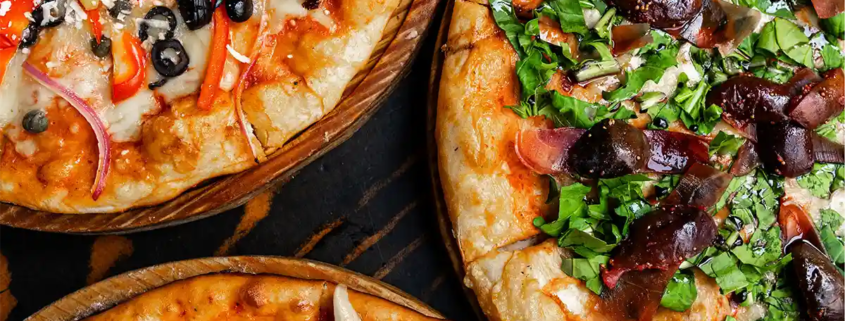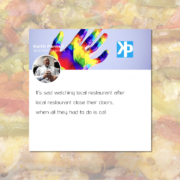How to Get Your Restaurant near the Top of Google Search
Hey there, fellow restaurant owner! In today’s tech-driven world, getting your restaurant to the top of Google search is a game-changer. Let’s dive into some practical tips, tricks, and strategies to make your eatery shine on the search engine stage.
Understanding the Importance of Google Search for Restaurants
Stats and Trends: The Digital Dining Landscape
So, you’ve got a killer menu and a cozy ambiance, but are you making the most of your online presence? Stats show that around 90% of customers read online reviews before deciding where to eat. That means Google is often the first stop on their culinary journey.
The Google Local Pack Magic
Ever wondered how some restaurants pop up right at the top of a Google search with tempting photos and reviews? That’s the magic of the Google Local Pack! It’s that coveted spot that can turn a searcher into a diner.
Key Elements of Optimizing Your Restaurant for Google Search
 Setting the Table with Google My Business (GMB)
Setting the Table with Google My Business (GMB)
Let’s start with the basics — Google My Business. It’s like the online menu for your restaurant. Fill it up with your contact details, opening hours, and some mouth-watering pictures. Google loves accurate information, so make sure everything is up to date.
Step-by-Step GMB Optimization
- Claim Your Spot: First things first, claim your business on Google. It’s as simple as searching for your restaurant on Google Maps and hitting the “Claim this business” button.
- NAP Consistency: No, not the afternoon nap you crave after a busy lunch shift. It’s about maintaining a consistent Name, Address, and Phone Number across all online platforms. Google likes things neat and tidy.
- Show and Tell: Add some flair to your GMB profile. Spice it up with high-quality photos of your dishes, the interior, and your smiling staff. A picture is worth a thousand clicks!
Cooking up Keywords for Your Website
Now, let’s talk about your website. Keywords are the secret sauce to get your site noticed by Google. Think about what your customers might be searching for — “best Italian restaurant near me” or “cozy cafes in Norfolk.”
Crafting Your Keyword Menu
- Localize Your Keywords: Include your location in your keywords. People often search for restaurants in their vicinity, so make sure you’re on their radar.
- Meta Magic: Sprinkle some keyword magic into your meta titles and descriptions. These are the snippets people see on the search results page. Make them catchy and relevant.
Content is King – Serve It Fresh!
Now, let’s talk content. Your website isn’t just a static page; it’s a living, breathing entity that needs regular updates.
The Content Kitchen
- Blog Away: Consider starting a blog on your website. Share stories about your culinary adventures, new menu items, or behind-the-scenes glimpses. This keeps your website fresh and engaging.
- Natural Keyword Integration: Don’t force keywords into your content. Let them flow naturally. Google prefers content that feels authentic and genuinely helpful to users.
Building High-Quality Backlinks: The Google Search Secret Sauce
Backlinks are like word-of-mouth recommendations for your website. The more reputable websites link to yours, the more Google sees you as a trustworthy source.
Nurturing Backlink Relationships
- Reach Out Locally: Connect with local bloggers, food critics, or influencers who might be interested in your culinary delights. A positive review or link from their site can work wonders.
- Steer Clear of Black-Hat Tactics: Resist the temptation to buy backlinks or use shady practices. Google can sniff out dishonesty, and it won’t bode well for your restaurant’s online reputation.
Local SEO Strategies for Restaurants
 Review and Respond: The Two R’s of Online Reputation
Review and Respond: The Two R’s of Online Reputation
Customer reviews are the lifeblood of your online reputation. Embrace them, respond to them, and turn the negative ones into opportunities.
Review Management 101
- Positive Reinforcement: Encourage happy customers to leave positive reviews. You can include a polite request on your receipts or even offer a small incentive.
- Handle Negative Reviews Gracefully: Mistakes happen. When they do, respond professionally, apologize, and show that you’re committed to making things right. It’s a chance to showcase your excellent customer service.
Local Schema Markup: A Recipe for Success
Ever heard of schema markup? It’s like giving Google a little extra information about your restaurant, and it loves that.
The Magic of Schema Markup
- What is Schema Markup? It’s a code you add to your website to provide more context to search engines. For a restaurant, this could include details like the type of cuisine, operating hours, and customer reviews.
- Implementation Made Easy: Don’t worry; you don’t need to be a tech genius. There are plenty of tools and resources available to help you implement schema markup on your site.
Monitoring and Analytics: Keep Tabs on Your Restaurant’s Google Search Success
Now that you’ve set everything up, it’s time to keep an eye on your performance and make informed decisions.
Google Analytics Demystified
- Set It Up: If you haven’t already, create a Google Analytics account for your website. It’s a treasure trove of data that can help you understand your online audience.
- Regular Health Checks: Take a peek at your analytics regularly. Track your website traffic, user behavior, and most popular pages. This information can guide your future content and SEO efforts.
Staying Ahead of Google’s Game
Google’s algorithms are constantly evolving, and it’s crucial to stay in the loop.
Riding the Algorithm Waves
- Stay Informed: Follow industry news, subscribe to SEO blogs, and keep an eye on Google’s official announcements. Being aware of changes helps you adapt your strategies proactively.
- Adapt and Thrive: When Google rolls out updates, don’t panic. Evaluate how they might affect your restaurant’s online presence and adjust your SEO strategy accordingly.
And there you have it, a recipe for success in getting your restaurant to the top of Google search results. Consistency is key, so take these strategies, make them your own, and watch your restaurant climb to the top of the digital dining scene. Bon appétit!









